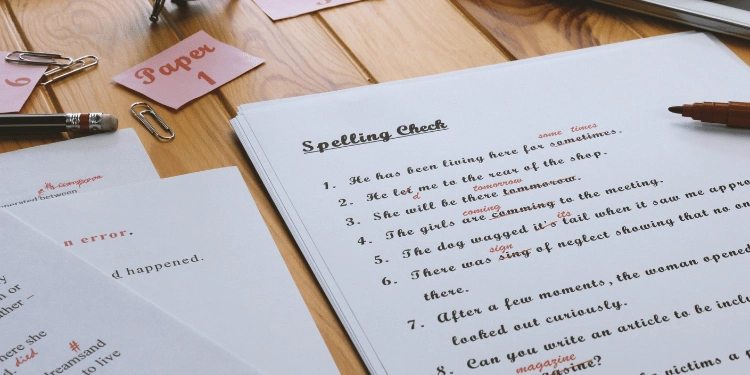How to Manage LSAT Test Anxiety: A Comprehensive Guide
Anúncios
Handling the stress of the Law School Admission Test (LSAT) is a skill that can be learned and perfected with practice.
The LSAT is intentionally designed to be challenging, testing your reasoning abilities under pressure to simulate the demands of law school and legal practice.
Anúncios
However, even the most academically gifted individuals often find themselves overwhelmed by test-day anxiety, leading to a disconnect between their potential and their actual performance.
The good news is that test anxiety is not a personal flaw or limitation.
Anúncios
Just as mastering conditional or causal reasoning is a skill that can be developed, so too can the ability to manage your mind under pressure.
This guide will explore actionable strategies to help you conquer LSAT test anxiety, ensuring you perform at your best on test day.
Understanding LSAT Test Anxiety
The LSAT is often compared to an extreme mental sport.
Over the course of three hours, your brain is pushed to its limits, requiring intense focus, rapid deductions, and unwavering mental agility.
To put this into perspective, consider that chess grandmasters during tournaments can burn up to 6,000 calories a day and experience blood pressure levels similar to those of elite athletes—all while sitting still.
When you take the LSAT, your body undergoes a similar physiological response.
Hormones like adrenaline and cortisol are released, supercharging your brain but also placing significant strain on your bodily systems.
This biochemical reaction triggers the “fight or flight” response, prioritizing survival over comfort.
Symptoms such as self-doubt, racing thoughts, and stomach cramps are common, but they do not indicate a lack of ability or preparedness.
Think of it this way: Olympic athletes often experience heightened nerves before a competition.
Their muscles may twitch, their stomachs may tighten, and their minds may race.
Does this make them bad athletes?
Of course not.
Similarly, feeling pressure on LSAT test day is natural and expected.
The key lies in how you anticipate and respond to that pressure.
Visualizing Success: A Powerful Tool
One of the most effective ways to combat test anxiety is through visualization.
By mentally rehearsing the test day experience, you can condition your mind and body to remain calm and focused.
How to Practice Visualization
- Create a Detailed Script: Write down a step-by-step account of your ideal test day, from waking up refreshed to confidently answering questions and finishing strong.
- Incorporate Sensory Details: Make the visualization as vivid as possible by including sensory details—what you’ll eat for breakfast, the sounds in the testing room, the feel of the desk beneath your hands.
- Rehearse Daily: Read your script aloud twice a day and mentally rehearse the entire performance. This practice reassures your subconscious mind that you are prepared and in control.
By grounding your visualization in real, tangible details, you can make it more vivid than your fears.
Over time, this mental rehearsal will help you approach the LSAT with confidence rather than panic.
Anticipating and Overcoming Challenges
No test day goes perfectly, and the LSAT is no exception.
Technical glitches, noisy proctors, or difficult questions can throw you off track if you’re not prepared.
Strategies to Handle Curveballs
| 📌 Strategy | 📍 How to Implement |
|---|---|
| 🚧 Plan for Distractions | Think about potential disruptions and how you’ll respond. For example, if the proctor is noisy, remind yourself to focus on your breathing and tune out the background noise. |
| 🔄 Reframe Discomfort | Instead of suppressing your worries, acknowledge them. Find humor, meaning, or comfort in the situation, just as you might in other challenging circumstances. |
| 🎯 Reframe the LSAT | Shift your perspective from viewing the LSAT as a test of your worth to seeing it as an opportunity to showcase the skills you’ve honed through practice. |
By anticipating possible issues and planning responses, you can prevent minor problems from becoming major distractions.
Preparing Your Body and Mind
In the days leading up to the LSAT, your focus should be on maintaining peak physical and mental condition.
Build Healthy Habits
- ✍️Nutrition: Fuel your brain with whole foods rich in protein, flavonoids, and healthy fats. Steer clear of sugary snacks, as they can cause energy crashes.
- ✍️Sleep: Maintain a regular sleep schedule and create a calming bedtime routine for better sleep.
- ✍️Exercise: Engage in regular physical activity, such as walking, yoga, or weight training, to alleviate stress and enhance focus.
- ✍️Hydration: Stay hydrated and avoid alcohol, which can impair cognitive function for days.
The Day Before the Test
Instead of cramming or tackling stressful practice questions, review your notes or revisit problems you’ve already mastered.
This approach will engage your brain without feeding your fears, leaving you feeling confident and prepared.

Staying Focused on Test Day
When the clock is ticking and your mind starts to race, it’s crucial to have strategies in place to regain focus.
Techniques to Stay Calm
- ✍️Ground Yourself: If you feel overwhelmed, take a moment to focus on your breath or the physical sensations around you, such as the feel of the desk or the weight of the pencil in your hand.
- ✍️Flag and Move On: If a question stumps you, flag it and move on. Return to it later when the time pressure is less intense.
- ✍️Take Small Steps: If you’re feeling flustered, focus on completing one small task, such as eliminating an incorrect answer choice or applying a technique you’ve practiced.
Remember, wise marathon runners don’t think about the entire 26.2 miles ahead of them.
Instead, they focus on maintaining a steady pace for the next 50 feet.
Similarly, breaking the LSAT into manageable chunks can help you stay calm and focused.
After the Test: Reflect and Recover
Once the LSAT is over, it’s normal to feel a mix of exhaustion, relief, and uncertainty.
Take pride in the effort you’ve put in and give yourself permission to rest and recover.
Post-Test Self-Care
- ✍️Celebrate Your Effort: Regardless of the outcome, acknowledge the hard work and dedication you’ve invested in preparing for the LSAT.
- ✍️Rest and Recharge: Make sure to take time for yourself to relax and participate in activities that bring you joy and peace.
- ✍️on the Experience: Consider what strategies worked well and what you might do differently next time.
Conclusion
Managing LSAT test anxiety is not about eliminating stress entirely but learning to harness it effectively.
By understanding both the physiological and psychological aspects of test anxiety, visualizing success, anticipating challenges, and maintaining peak physical and mental health, you can approach the LSAT with confidence and composure.
Remember, the LSAT is not just a test of your reasoning abilities—it’s an opportunity to demonstrate resilience, focus, and determination.
With the right mindset and preparation, you can turn test day into a stage for showcasing your hard-earned skills.
So, take a deep breath, trust in your preparation, and run your race to victory.







